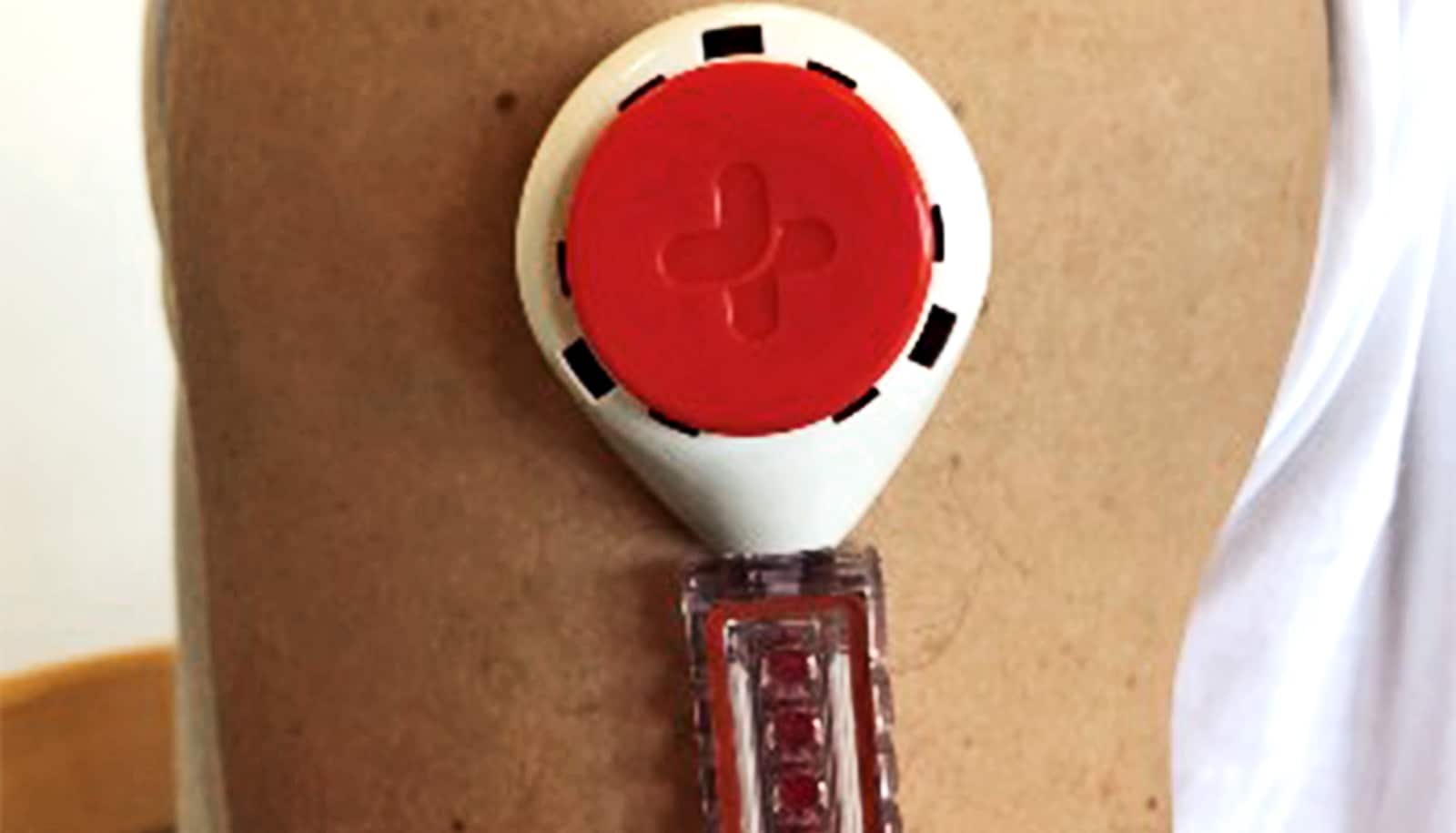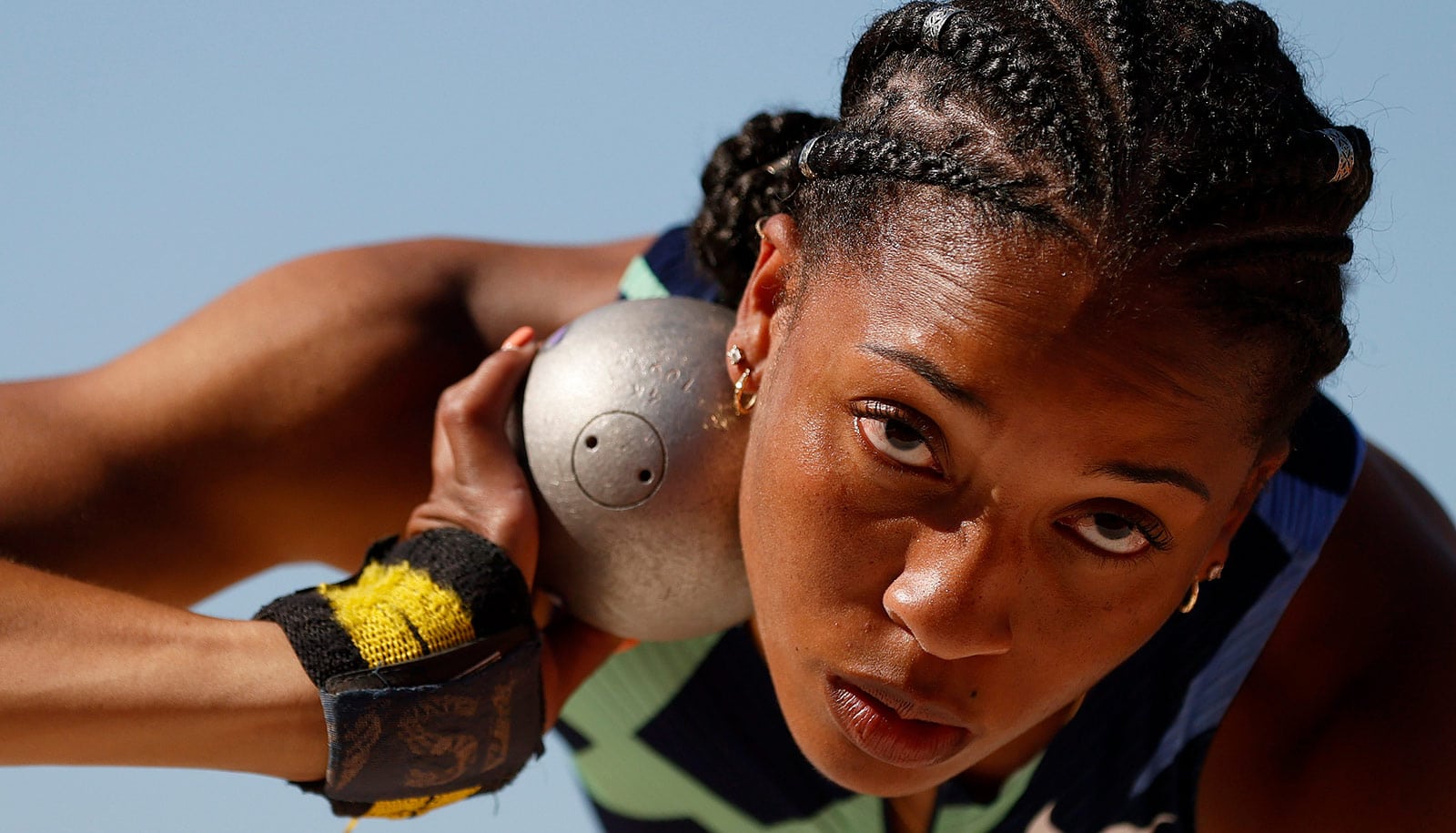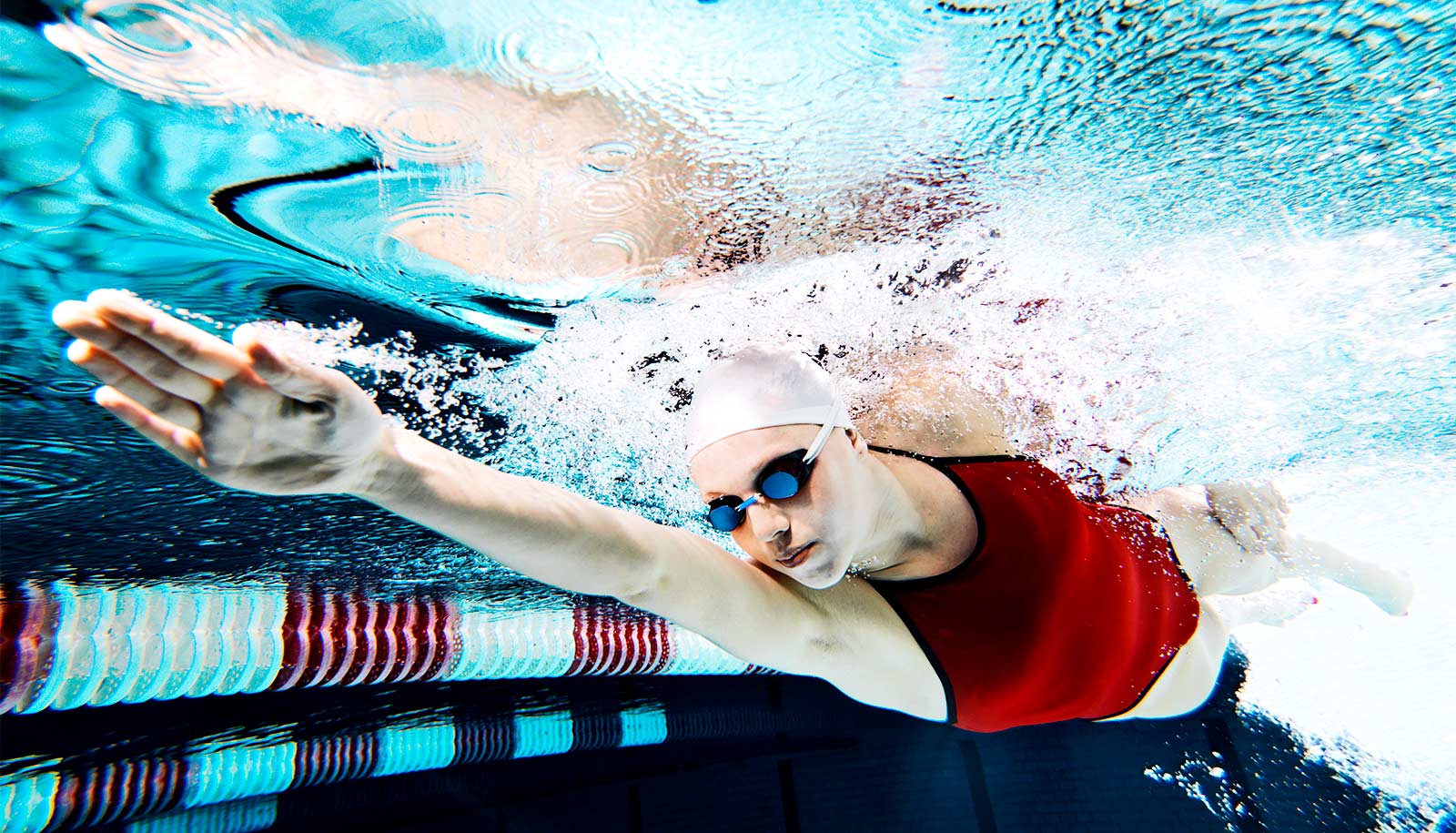
The new testing method can be performed with a needle in the finger or in the arm, as shown in the picture. (Credit: Sara Amalie Solheim/Anti Doping Danmark)
Single drop of dried blood can reveal athlete doping
A new method that uses blood droplets can detect athletes who have taken performance-enhancing drugs. Researchers say it might be tested at the Olympics.
A new method uses blood droplets to easily and effectively detect athletes who have taken performance-enhancing drugs.
The method received approval from the World Anti-Doping Agency and could be tested at the Tokyo Olympics.
We probably only know the tip of the iceberg when it comes to the number of doped athletes. Indeed, studies show that considerably more athletes use performance-enhancing drugs than get caught in anti-doping controls.

Among other things, this may be due to lackluster doping measures in certain countries or that some practitioners engage in sophisticated methods, such as micro-dosing, which can be difficult to detect.
In 2017, a number of researchers had a good idea for making it easier and more effective to find drug cheats using a small prick in the finger and just a few droplets of blood.
Sara Amalie Solheim is among the researchers behind the idea for the testing method, which she helped develop as a PhD student at the University of Copenhagen from 2017 to 2019 in collaboration with, among others, Nikolai Nordsborg, a researcher at the University of Copenhagen, the Norwegian Doping Control Laboratory, and Anti-Doping Denmark, where she currently works as a scientific consultant.
“The method involves a prick of an athlete’s finger or upper arm using a needle and a quick collection of a few droplets of blood on a piece of filter paper. The dried blood droplets are then analyzed for doping substances in a laboratory. The method is smart because it is faster, less painful, and less intimidating than traditional blood and urine tests,” Solheim says.
“Athletes find the method to be more gentle and effective because it doesn’t hurt to get pricked in the finger or upper arm and it’s over quickly.”
In their new study in the journal Drug Testing and Analysis Solheim and Nordsborg demonstrate that the method is, among other things, very accurate when it comes to detecting anabolic steroids, including testosterone, which are often used in disciplines such as weightlifting and strength lifting.
Furthermore, an evaluation of the method concludes that athletes, doping control officers, and laboratory staff prefer the blood drop method to conventional testing methods.
“Athletes find the method to be more gentle and effective because it doesn’t hurt to get pricked in the finger or upper arm and it’s over quickly,” Solheim says.
“The method also addresses the problem that doping control officers’ face in getting a dehydrated athlete to provide a urine sample, after, for example, sitting on a bicycle for several hours,” says Nordsborg, a professor at the department of nutrition, exercise, and sports, who contributed to the development of the method as well.
The method makes it possible to test far more athletes in a short period of time. Instead of 10 athletes a day, 100 can now be tested because the test is performed so quickly and is easily transported.
“The paper with the dried droplets of blood can be stored in an envelope in the back of a car and doesn’t require the cooling or space that today’s blood tests do,” Nordsborg says.
Researchers aren’t the only ones excited about the method. The World Anti-Doping Agency (WADA) sees great potential in the dried droplets of blood and has just approved the method for implementation in Denmark and internationally from September 2021. They even plan to test it out at this summer’s Tokyo Olympics.
Source: University of Copenhagen
The post Single drop of dried blood can reveal athlete doping appeared first on Futurity .
Share this article:
This article uses material from the Futurity article, and is licenced under a CC BY-SA 4.0 International License. Images, videos and audio are available under their respective licenses.
Related Articles:
Can the wrong food ruin an Olympic athlete’s performance?
July 12, 2021 • futurityFor Olympic cheaters, drugs vary by sport
July 21, 2021 • futurityLinks/images:
- https://www.futurity.org/olympic-athletes-doping-performance-enhancing-drugs-2599892/
- https://www.futurity.org/blood-doping-athletes-1891902/
- https://doi.org/10.1002/dta.3030
- https://www.futurity.org/covid-19-vaccine-blood-test-antibodies-2577872/
- https://news.ku.dk/all_news/2021/07/dried-blood-can-detect-doping-now-approved-the-method-may-be-tested-at-the-tokyo-olympics/
- https://www.futurity.org/blood-test-doping-athletes-performance-enhancing-drugs-2601972/
- https://www.futurity.org


